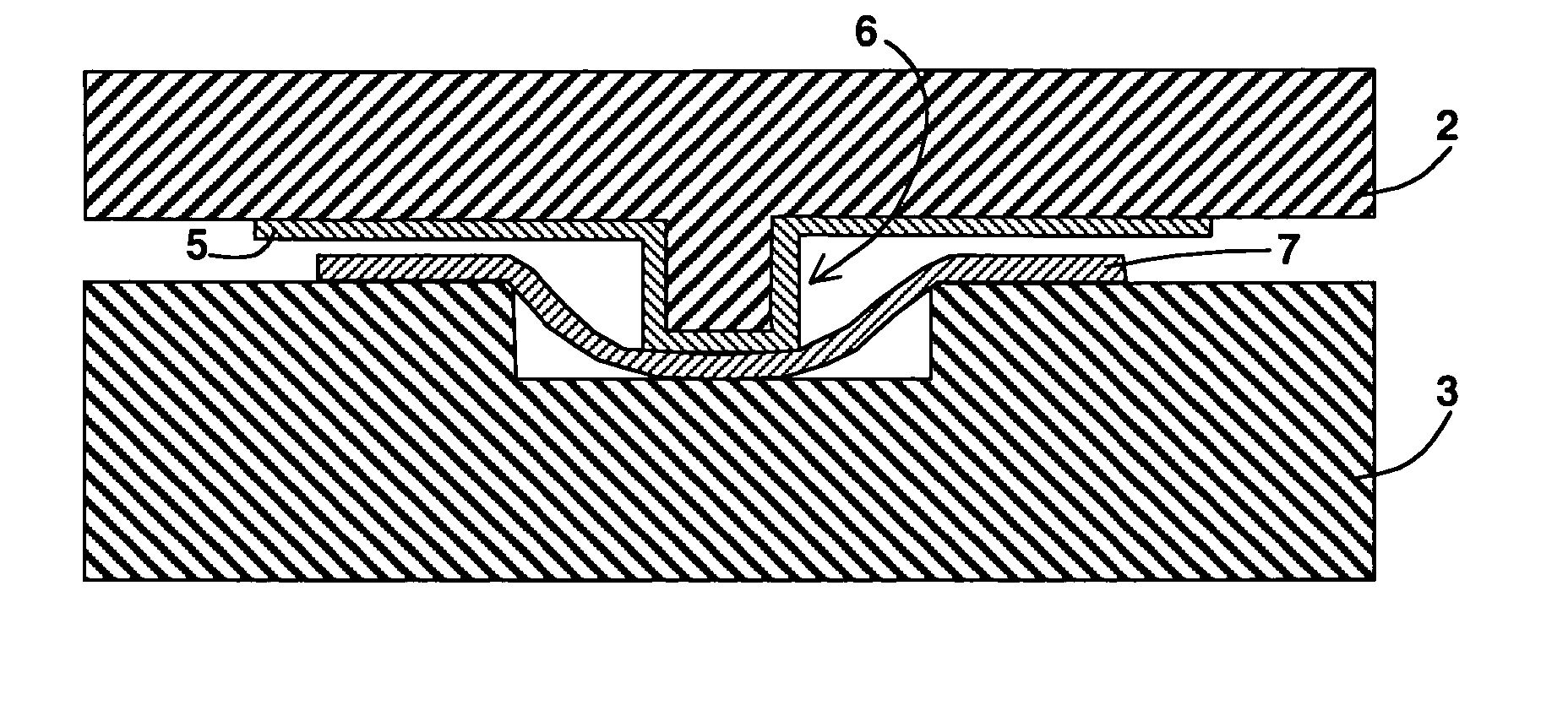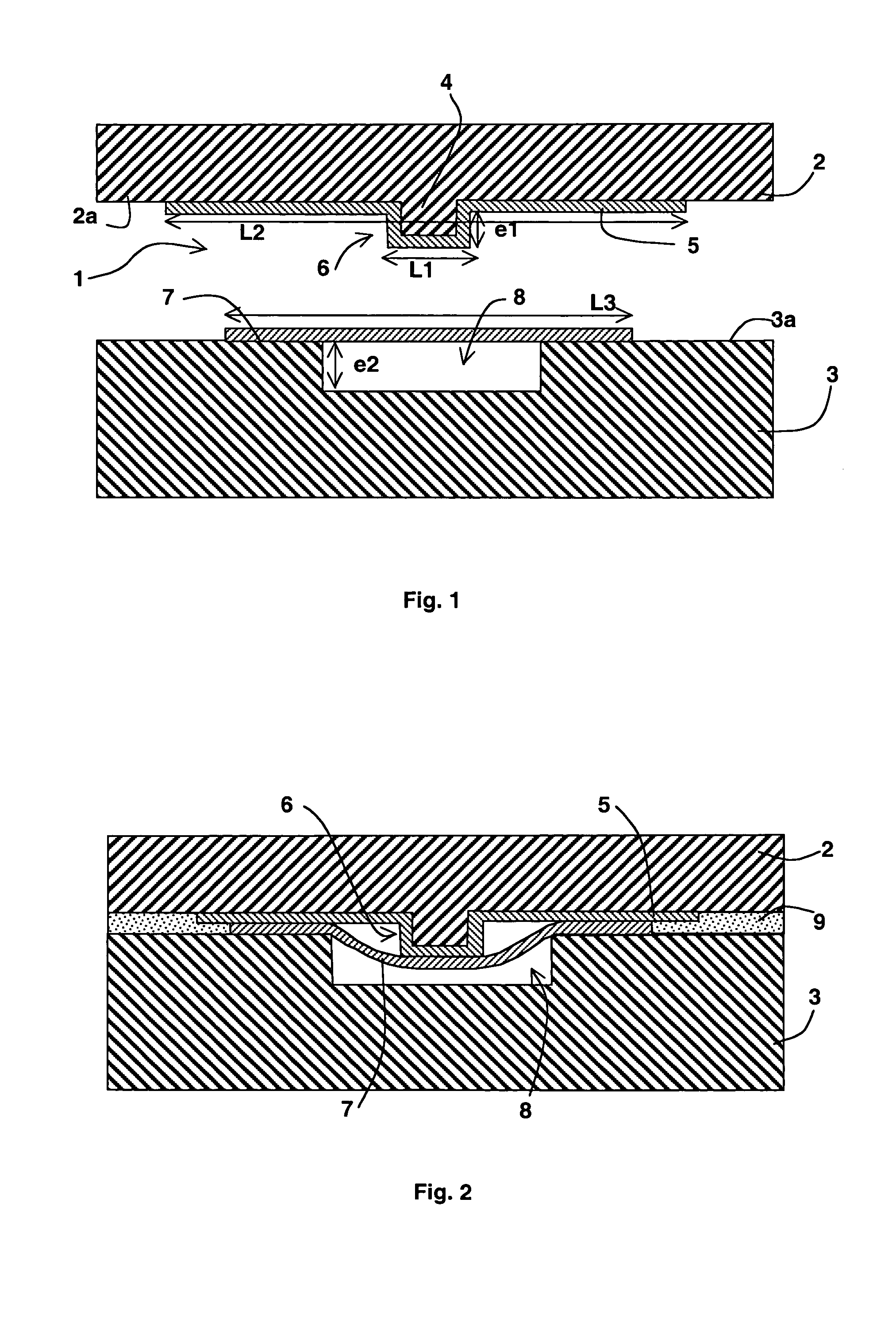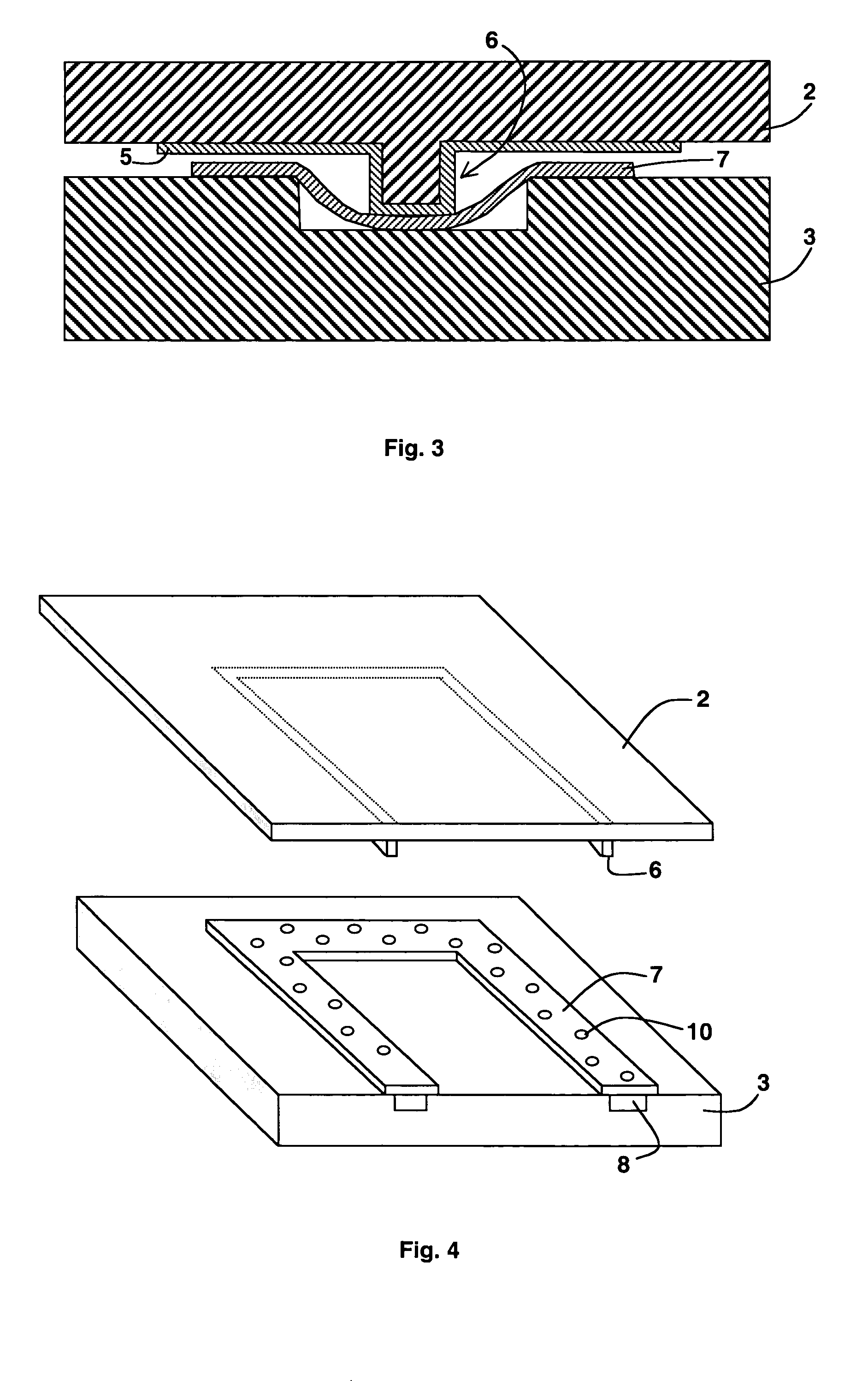Device for electrical connection between two wafers and fabrication process of a microelectronic component comprising such a device
- Summary
- Abstract
- Description
- Claims
- Application Information
AI Technical Summary
Benefits of technology
Problems solved by technology
Method used
Image
Examples
Embodiment Construction
[0021] As represented in FIG. 1, in a microelectronic component comprising first and second wafers 2 and 3, an electrical connection device 1 comprises at least first and second contact elements respectively integral to the opposite faces 2a et 3a of the first and second wafers 2 and 3. The first and second contact elements are designed to be placed in contact with one another to achieve an electrical connection when the first and second wafers are assembled. Each wafer 2 or 3 can for example be made of silicon or glass. Thus, the first wafer can for example form a substrate whereon an integrated circuit is arranged whereas the second wafer can be a substrate whereon there is arranged a Micro Electro Mechanical System (MEMS).
[0022] Thus, in FIG. 1, the face 2a of the first wafer 2 comprises a protrusion 4 and a metallic layer 5 is arranged on the face 2a, so as to cover the protrusion 4 and to form a salient zone 6. The metallic layer 5 preferably has a greater width L2 than the wi...
PUM
 Login to View More
Login to View More Abstract
Description
Claims
Application Information
 Login to View More
Login to View More - R&D Engineer
- R&D Manager
- IP Professional
- Industry Leading Data Capabilities
- Powerful AI technology
- Patent DNA Extraction
Browse by: Latest US Patents, China's latest patents, Technical Efficacy Thesaurus, Application Domain, Technology Topic, Popular Technical Reports.
© 2024 PatSnap. All rights reserved.Legal|Privacy policy|Modern Slavery Act Transparency Statement|Sitemap|About US| Contact US: help@patsnap.com










